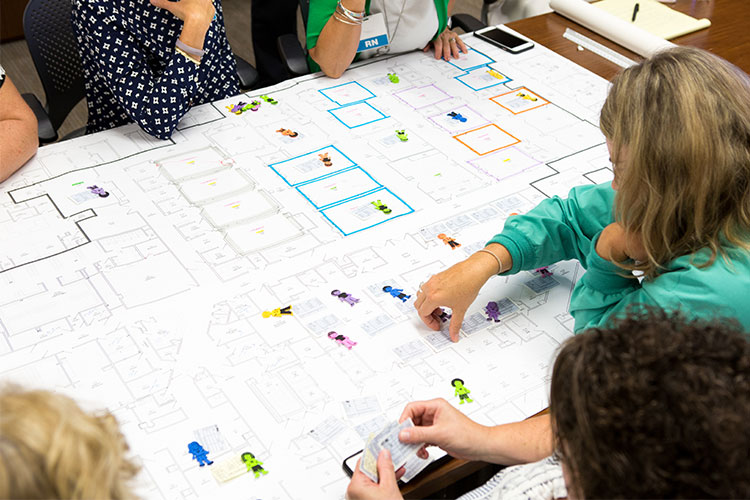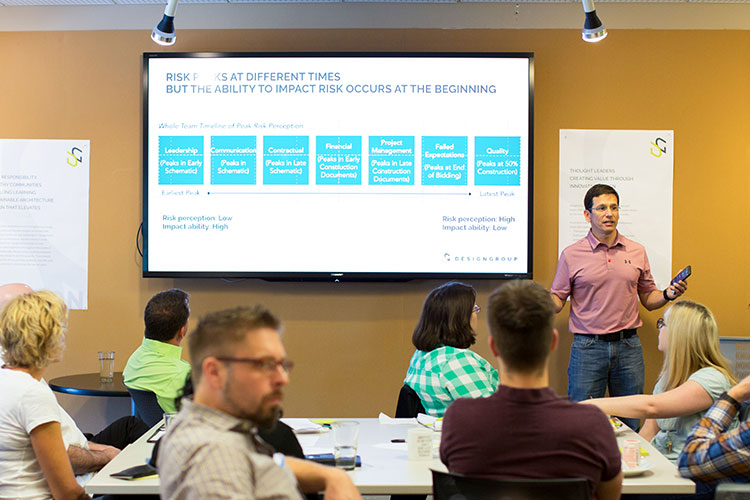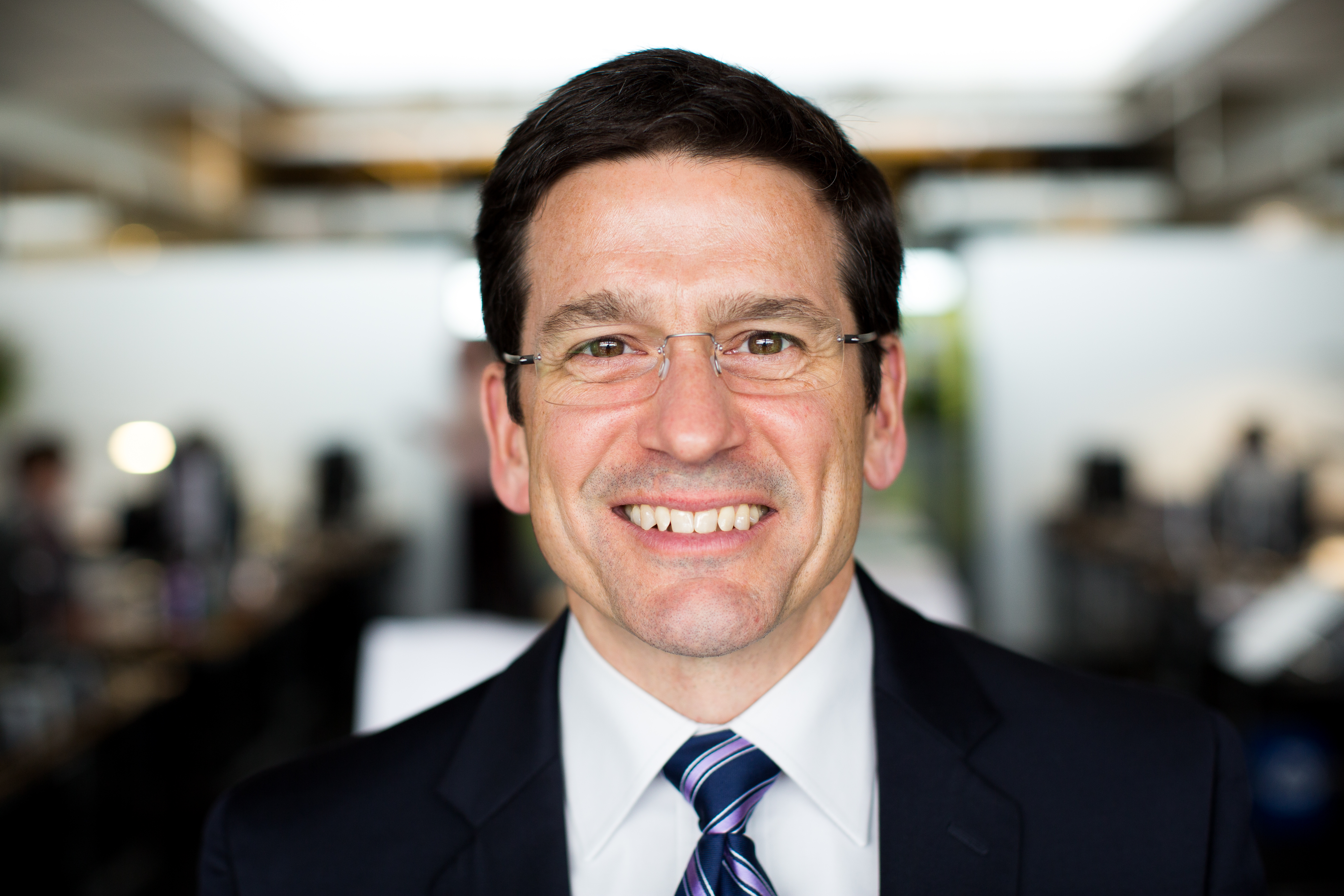Change always happens. How we respond is what matters. DesignGroup CEO Sherm Moreland offers proven insights for strategic planning during times of uncertainty.
By: Sherm Moreland AIA, ACHA, LEED AP BD+C // Chief Executive Officer
In this time of uncertainty, we stand at a fork in the road.
The road on the left is one of action. If we take it, we move forward making the best planning decisions we can given the best information we have. It is the path of the leader, the optimist, the builder.
The road on the right is one of caution. Choosing that path, we wait and defer as we gather more information, collect more inputs, and hope for a clear signal of certainty to appear.
Which road should we take? How will we know?
In my 30-year career as a healthcare planner, there have been dramatic changes and events that informed and reshaped the future. The tremendous wave of hospital mergers and acquisitions that occurred in the early 1990s. The proposed healthcare reform of the mid ‘90s (the Clinton health care plan) and again in the 2000s (Obamacare). The hardening and terror-proofing of our critical infrastructure after 9/11. The fear and reaction to SARS and Ebola. And now the once-in-a-four generation (and hopefully never again) international pandemic of COVID-19.
We can’t trivialize or simply forget watershed moments like these. Indeed, in answering the question of which road we take, I look back at the responses to those earlier challenges and find inspiration.
Today, as we did then, I believe it’s essential we choose the path of action, optimism, and positivity as we move forward.
So how do you do that?
While no issue or event is the same, reliance on the ideas listed below can help you bring order to chaos and guide decision making in turbulent times. Keeping these ideas in mind will provide clarity and confidence in decision making as you map the path forward.
1. Understand the system.
Good planning must first truly understand and acknowledge the “system” in which we work, the aim of the system, and the system’s inherent interdependencies. Systems thinking and evidence-based knowledge are essential to accomplishing desired results that are resilient and sustainable. Without the discipline of systems thinking, both the causes and consequences can be easily misunderstood, or worse, overlooked altogether. (The concept of systems thinking fills many books and scholarly articles; to learn more, I would recommend the work of W. Edwards Deming.
2. Identify and canonize self-evident truths.
A common planning mistake is to move too quickly through theoretical iteration and rush to the tactical phase of decision making. Time spent early in the process understanding, debating, and building consensus on the absolutes – both the obvious and the ridiculous – will encourage better questions throughout the process and ultimately speed decision-making later. Write these self-evident truths down, agree on them, and don’t spend time revisiting and rethinking later. These ideas become the foundation on which a plan is built.

3. Simplify the complex, and make data and decision making visual and visible.
This is a mantra at DesignGroup. It’s a hallmark of our planning and fundamentally necessary for strategic prioritization. In times of complexity, try to maintain a bias for simplicity, consistency, rhythm, and repetition around an easy-to-articulate message – simple, but not simplistic. Participants in the planning process will have all kinds of ideas that are strategically viable, but the process of writing it down, defining it, testing it, and getting stakeholders to say yes confidently will be the difference between succeeding or falling short. This is a leader’s imperative.
Several years ago, DesignGroup made the decision that all staff – 100% of us – would be lean trained. Lean’s A3 process, a structured template for solving problems for continuous improvement, helps simplify complex issues, makes them visual, accelerates the decision-making process, and improves the quality of the results. Tools like these allow decision makers to better visualize and understand the entire system and to use evidence-based knowledge.
4. Focus on the consumer experience.
At the risk of being cliché, we often use Amazon as a simple model for an organization delivering on what customers truly want – simplicity, speed, and low cost. In fact, our firm extensively researched and studied Amazon during a recent corporate retreat. Despite Amazon’s often cited shortcomings (success at the cost of local retailers; questionable treatment of employees), Amazon has an amazing focus on customer needs – and how to respond to them. We encourage clients to learn from the best parts of Amazon and apply that relentless focus on customer satisfaction to every decision made.

5. Always bet on technology.
And prepare to embrace it quickly. In recent discussions with several major healthcare clients, virtual doctor visits for primary care – telehealth – has gone from less than 10% pre-pandemic to more than 80% during quarantine. Keep in mind, this change has happened in just the past 10 weeks. Let that sink in. These changes are here to stay, and new tech will continue to emerge to meet these new needs and routines.
6. Maintain your sense of empathy.
Sometimes the word “customer” doesn’t establish the right mindset for every decision. One key, non-negotiable fact the pandemic made perfectly clear: people need other people. Human connections and interactions are essential to survival, and they cannot live in quarantine and isolation forever. Prioritize and pressure test solutions for empathy — try to understand where the audience is as human beings, as you might as a family member. Again, lean training teaches respect for people. Despite the uncertainty in the world with COVID-19 and recent political unrest, people are still the center of all of it — and should be central to any strategic prioritization.
These strategies are a call for action, optimism, and leadership; a call for planning. There are many approaches to planning and many tools at our disposal. The ideas presented here draw from 30 years of experience and highlights essential, time-tested strategies appropriate and necessary for this moment. I encourage you to try these ideas. They build on lessons learned and help ensure a better planned, better prepared future.
For even more tactical advice for planning, please see our companion article “A Tool for COVID-19 Healthcare Facility Planning and Decision Making.”

Sherm Moreland AIA, ACHA, LEED AP BD+C // CEO
CEO of DesignGroup since 2009, Sherm is a design-oriented leader who has devoted his entire career to the programming and planning of award-winning, complex healthcare projects nationwide. He is a board certified healthcare architect and a lean certified project manager and is a frequent contributor to research of the Advisory Board Company. He has published and presented nationally on issues related to healthcare design, sustainability and corporate leadership. With over 30 years of focused experience in healthcare, clients benefit from his unique depth of industry specific knowledge and understanding of the ever-changing trends that lead to best practice thinking and innovation. Sherm firmly believes in having a bias for action and the value of teamwork and collaboration as the best path for enduring project success.
